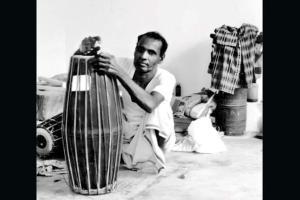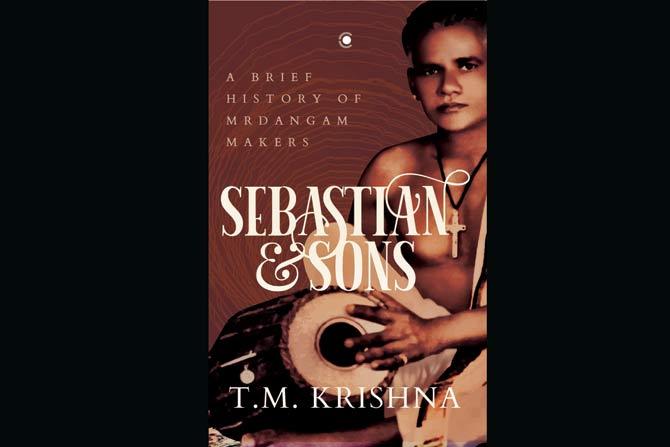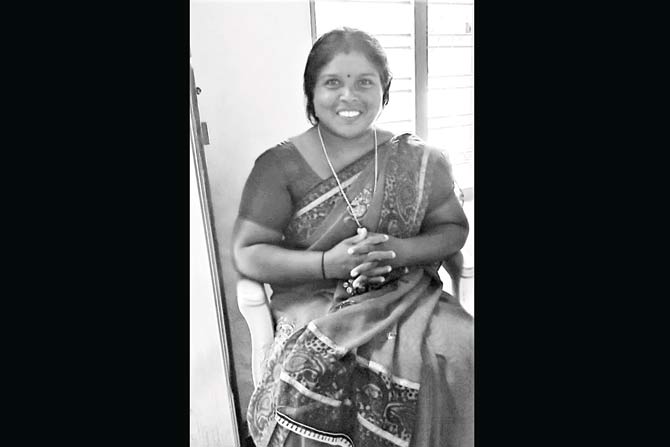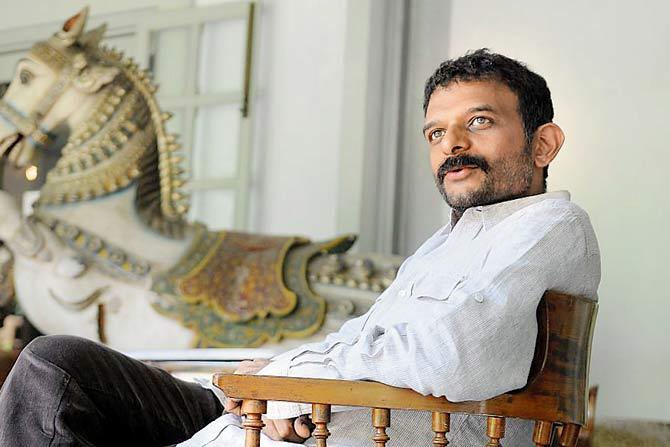Taking his battle against caste hierarchy within the Carnatic community forward, TM Krishna puts together the voices and memories of its should-have-been-legendary mrdangam makers

Famed mrdangam maker Sevittan Sebastian's grandson Selvaraj works on an instrument. TM Krishna says Selvaraj has spoken to eating the layer's leftover food. Pic/ TR Rajamani
It is perhaps one's own ignorance that not until recently the truth of the mrdangam was revealed. The percussion instrument, so integral to Carnatic music, is in fact, made of three layers of animal skin: goat, buffalo and cow. And yet, it is the prime instrument of a community that exhorts the notion of purity.
ADVERTISEMENT
"I talk about this dichotomy a lot in the book," says TM Krishna, Carnatic musician and Magsaysay awardee, about his forthcoming title, Sebastian and Sons: A brief history of mrdangam makers (Westland). The book is an over-350-page lesson on not just how the mradangam is made, but also the relationship that its makers share with the players. The book needed to be written, says the 43-year-old musician, because the craftsmen's contribution has been ignored.
"The only mrdangam maker who was spoken of in any way was Parlandu [S Parlandu, son of Sevittan Sebastian after whom the book is named]. Most of the others were not really known. I knew a few since they would at times accompany some colleagues (mrdangam artists) to concerts, but I never spent any serious time with them. That's the truth," Krishna admits. It was while looking at the second edition of his previous book, A Southern Music, that in the chapter on caste, he realised that he had not mentioned the mrdangam makers. "I had forgotten them [while writing A Southern Music]. In my music ecology, they didn't appear in my imagination. This bothered me since they are an integral part of the art but I didn't know anything about them. And so, if I wanted to write about them I needed to spend time listening and learning from them."

Over the course of 50 interviews, conducted over four years, and after multiple visits to various cities, Krishna heard their stories. Important stories that needed to be told and the unusual relationship that the artistes share with the makers. "Nowhere else will you find such a relationship between individuals belonging to two spectrums of caste. It is an aesthetic relationship; they need to be close for the art and the training of the mrdangam, and yet we know nothing about the contribution of the makers. It's always the voice of the player [that is heard]."
Krishna says that the discrimination is true for other instrument makers too. Yet, in the case of the mrdangam, it is stark because animal skin is involved in its manufacture. "It completely changes the dynamics of discrimination and hypocrisy. Because skin is involved, it means that only a certain community can work on it, and they are pushed down the caste ladder. But, this instrument is worshipped as Nandi's instrument, and to make it, Nandi must be hacked. The irony here is spectacularly crazy. And the community is doing everything in its capacity to purify the notion of skin for you and then produce an instrument that is worthy of worship. Without the three skins—goat, buffalo and cow—the mrndangam won't exist."

Fresh buffalo skin drying in mrdangam maker Geetha's yard. The instrument uses buffalo, goat and cow hide
The book, which journeys into Thanjavur, the city where Sevittan's sons reside and make their famed instruments, talks of the quiet instances of discrimination that have been normalised over time. It speaks of players not being involved in the making until the last stages; of food only being served to the mrdangam makers in their sheds, sometimes, leftovers. But, Krishna is not attacking the caste mentality only in the Carnatic music fraternity. As he says, "it's the Brahmanical nature of how we have shaped Indian culture [that I am questioning]." Parlandu's son, Selvaraj, "adopted by Mani Iyer" for whom he made mrdangams, is quoted as saying, "I did not eat with him. In Madras, when Mani Iyer stayed at the Woodlands Hotel, I used to eat his leftovers. He knew that and would keep some for me."
Krishna asks, how many of us give stale food to our house helps. "It is similar. We don't want to waste food, so we give it to them. It's just wrong. Why don't we eat that food for the next meal, even if old? But this is used as a trope for the closeness of the relationship. To Selvaraj, it showed that Mani cared. And that's the most dangerous bit about caste. It almost makes the oppressed grateful for the attention they are getting. It's done so effectively that we all miss it."

Geetha
Krishna says, in the musical context, that the makers' contribution has been denied to the arts, is problematic. A customised mrdangam takes two weeks to manufacture once the wooden shell is procured and if the maker is free to dedicate time to it. Else, it could take months. The player is not part of process until the final setting up. The abstract notions of sound make the work of the mrdangam maker brilliant.
"All that the player will say is, 'sound sariya illiye [the sound is not good]'. Or that the tone is dull. It's not bright enough. It's sounding stuffed. And it's because the player and the maker share a long relationship that the latter instinctively knows what particular sound the player needs." And yet, the monetary compensation doesn't compare. The attitude being, "Your work I cannot do, but it's also not as great as me playing the mrdangam."

It's been eight years, says Krishna, since he first spoke of discrimination in the music world. But, much of the community continues to live in denial. "In all these years, has a similar discourse occurred in the Hindustani music world? It exists but no one is even breathing about it. Let us also not forget that the Hindustani music world also remained absolutely silent when #metoo was a burning issue even in the Carnatic world. This tell us so much about how the Hindustani world is constructed and controlled. As far as Carnatic music goes, I have hope for the younger generation. They speak to me privately and are conscious."
Catch up on all the latest Mumbai news, crime news, current affairs, and also a complete guide on Mumbai from food to things to do and events across the city here. Also download the new mid-day Android and iOS apps to get latest updates
 Subscribe today by clicking the link and stay updated with the latest news!" Click here!
Subscribe today by clicking the link and stay updated with the latest news!" Click here!






